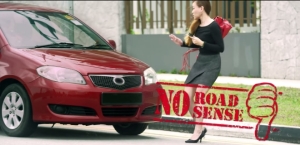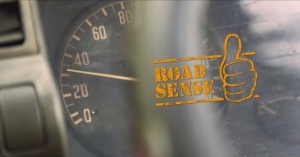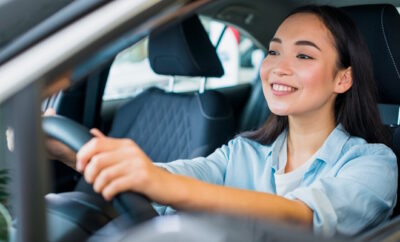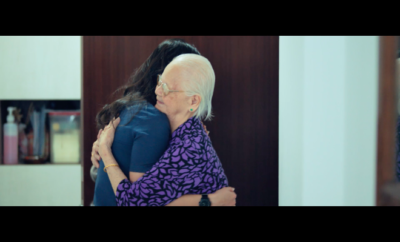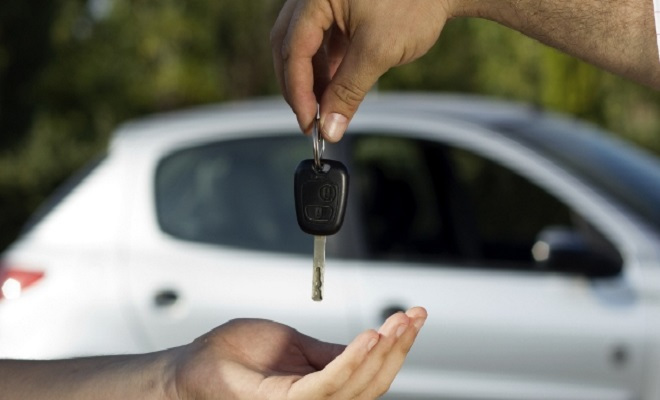
Insights + interviews
A Father-Child Conversation About Driving For The First Time
The Active Age re-imagines a father-child conversation about driving for the first time.
The Traffic Police continues to engage road users through their Use Your Roadsense movement in Singapore. Given the changes and developments of Singapore’s roads, this is a recognition by the Traffic Police about the diversity of users as well as how the use of technology can affect attitudes on the roads.
The Active Age decided to focus on one type of road user – the newly minted young driver taking the family car out for the very first time, with her father in tow as the front passenger – and in the process guide his daughter on driving sensibly.
We consolidated responses from several parents, these include Ms. Christina Stanley, a consultant; Mr. Kevin Menon, a registered clinical psychologist; and Deputy Superintendent Soh Wan Khuan, CO, Road Safety, Traffic Police.
The following dialogue is fictional but we hope it can help act as a guide for parents to refer to future when facing similar scenarios.
The key aspects of the dialogue consists of the application of common sense on the road; include the taking of time to adjust to road conditions, reaction to common situations such as signalling, blind spots, speeding, the importance of driving with other road users in mind and the exercising of patience when driving.
*****
The seat is adjusted to just the perfect angle for the rear view mirror, seat belts are buckled, the little knob to adjust the side mirrors used, the key turned and the engine started. As the car moves slowly out of the parking lot, you can’t help but do a quick side mirror check to make sure that the car next to you is not too close.
You feel the car turn hurriedly and you grip the passenger door handle and ease your feet into the recess where the brake pedal would have been, but this time round you’re not the driver and this is not a driving school practice car.
It’s your daughter’s first time behind the wheel since she received her driving licence, and since then, there have been numerous requests of “Daddy, can I try driving your car today?”, and you finally relented and chose a weekend morning whereby traffic is lighter to make this important milestone happen.
Saturday’s finally here, and you are riding as a passenger. All bets are off on which one of you is more nervous.
You (Y): Slowly, slowly, don’t step too hard on the accelerator.
Daughter (D): Ok, ok, I have done this many times in driving school already! *grumbles*
Y: Ya, at driving school, but this is not the driving school, there are no orange cones to warn you about the kerb!
D: (silence)
Y: I know you think I’m going to nag you every step of the way, but to put things into perspective, let me share some context with you before we head out of the car park.
I was in a similar position as you, some 25 years ago when I started driving. The island felt a little smaller, there were lesser roads to remember and they weren’t as congested. There were unforgiving road users, more so now than before, and you’ll learn to quickly keep left if you didn’t want to be horned at. Your grandpa was basically the master of the car, even though I was the one driving, with my every move dictated by him.
But that’s not going to happen today, because I want you to understand that I am just as nervous as you are. I know you want to show me you know how to drive, and that you are ready to be on the road. And that’s the problem with most youngsters when they first got their license, they are imbued with a sense of bravado, a false sense that can potentially get someone killed. I want the same thing as grandpa, to know that I can trust your driving, that you and the car will be safe, even without me being around, but in a different manner.
D: Yes Dad, I will keep us and the car safe.
Y: Ok, if you want to be independent in driving, you have to prove to me that you’re responsible, so let’s set up some targets for today. We will drive around the neighbourhood and after which you’ll get the opportunity to drive on the expressway for one exit and then back home, how does that sound?
D: Ok, but no sudden yelling at me. That makes me nervous, because the instructor would often suddenly shout and get me to change lanes.
Y: I will still yell if need be to keep you out of danger. Let’s head out of the car park, there are several objectives I have as you are driving around. The first will be the adaptation to road conditions. As you leave the car park, you will move from a minor road into a major one. These are some things you need to bear in mind, always watch and gauge traffic conditions, and ask yourself if the road is crowded, are there many cars or bigger vehicles such as trucks or lorries and what is the average speed that everyone is keeping to.
And signal. The signal stalk is one of the rarely used feature of a car by many ‘experienced’ drivers, but it is one of the most important. Signalling indicates to the other road users your intention, and this allows them ample time to react to you.
D: Ok, I am signalling. After that third red car passes me by, I will turn left out of the car park.
Y: Keep to the extreme left lane first and don’t go shooting out to the centre or right most lane, other drivers expect you to keep to your lane so it won’t confuse them.
D: Ok… But how often do you check your mirrors? The driving school says every 10 – 20 seconds.
Y: Think of checking your mirrors as building a ‘radar sense’. Every moving vehicle near you or behind you becomes a part of your mental map. Your peripheral vision – as you check your mirrors and blind spots makes you become more aware of other road users, such as other vehicles, cyclists and pedestrians. If you need to check more often to feel comfortable, do so.
D: Should I speed up? To keep pace with the speed of the car next to me? So I can change lanes?
Y: It is usually easier to change lanes when you slow down and let the vehicles pass you on the lane you want to move into. You don’t gain much by arriving a few minutes faster at your destination, more haste less speed. Signal, wait for a gap, change lanes and speed up or slow down according to the lane’s condition. Give it a try.
D: Ok… about to change lanes, hey, the guy behind sped up! What?? Now I have to wait. *whines*
Y: Take your time, be patient!
D: *Changed lanes* Oh my god, that guy is so rude! He knew I wanted to change lanes and yet purposely sped up to cut the gap. Why are such people allowed to drive?! *whines more*
Y: There will always be rude drivers like him, the trick is to just ignore and not be distracted from the goal of driving to your destination safely. Our roads are common, shared spaces and everyone has a right to use them. It’s inevitable when we meet rude drivers and get irritated and frustrated by them. Remember, although we can’t control others, we can choose how we react.
Good road sense is all about being aware of the conditions around you and of other road users, so give them the benefit of the doubt. For example, if someone is driving slow, the first thought is that he or she is a road hogger, then again that person might be on his way to repair his car, or that person could be keeping conservatively within the speed limits because there’s a child in the car.
When you have these scenarios in mind, you are likely to take the most appropriate action and not be affected by the driver.
D: Whatever… If I get a chance to speak with that rude person…
Y: I cannot tell you why other drivers behave badly, but you will know one when you see that they fail to signal when turning or speed up when you signal to change lanes. Here’s another example, maybe a driver is tailgating you and being aggressive by flashing his high beam at you, this is exactly where and when you have a choice. Maybe you feel that you should respond with an equally aggressive behaviour, alternatively you could change lanes and let him overtake. With the second option, you avoid confrontation and protect yourself and your passengers from potential accidents.
Just look at it as if you are doing him a favour. Even though other drivers choose to be rude, it’s our personal responsibility to be sensible on the road. Practicing safe driving and road sense means you get to return home safely in one piece, so take a deep breath and just let it go.
D: (Takes a deep breath) Thanks dad, I feel much better now. Also, because that rude guy has already driven off.
Y: Ok, let’s get onto the expressway. Once you merge onto the main stream of traffic, remember that you’ll need to keep to your lane, watch out for motorcyclists weaving in and out of the lanes as well as keep to the speed limit, especially if you are on the right, overtaking lane. However, remember not to road-hog if you are on the right lane and instead, shift back to the middle or left lane.
D: Ermm, ermm, signalling… changing lanes. Why are the cars so fast?! Why is the car behind me tailgating me? Ok, ok, I am changing back to the middle.
Nearing the expressway exit…
Y: Well, that was fun. I have not felt so worried for a long time, since you took your O-Level exams. Maybe next time, you can try for a slightly longer duration. Ok, let’s get out at the next exit, we can head home and you can practice your parking.
At the car park, after the car has been parked.
Y: How did you find the drive today?
D: It was fun! And I didn’t think that it would be so tiring, I really like being on the expressway, driving fast but didn’t like the fact that the car behind me was so close. I still find that the rude driver should have been nicer but I get it that it’s up to me to let that go.
Y: You did well for a first timer. There were times that you were distracted and didn’t really check your blind spot. These are habits that need to be corrected to help you with your road sense. Don’t let a small thing become the mistake that you have to bear especially if an accident happens.
Also, I have had my share of becoming impatient and frustrated with other drivers on the road before, and I would ask that you learn to keep your cool and always be the first to extend courtesy on the road, even to rude drivers. That extra minute saved by speeding, increases the likelihood of an accident but won’t earn you more points at your destination. In fact, you’ll find that just by waving ‘thanks’ and smiling at the traffic lights will make the drive a much more pleasant experience.
(Screen captures taken from Roadsense Campaign Video posted by Singapore Traffic Police)

